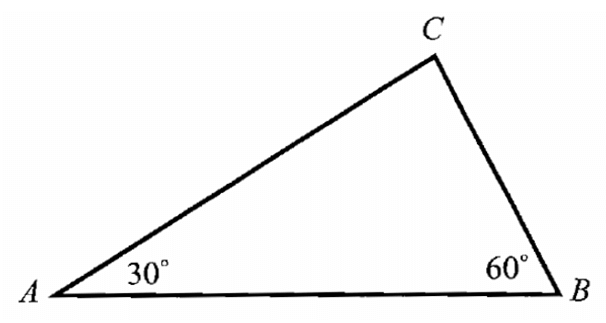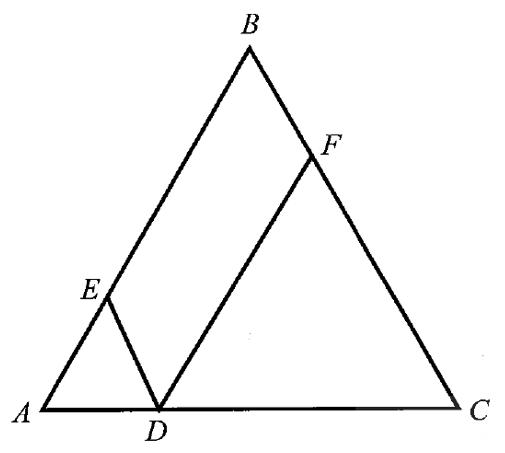FORMULA FOR A UNION B UNION C
n(AuBuC) :
=n(A) + n(B) + n(C) - n(AnB) - n(BnC) - n(AnC) + n(AnBnC)
Explanation :
Let us come to know about the following terms in details.
n(AuB) = Total number of elements related to any of the two events A & B.
n(AuBuC) = Total number of elements related to any of the three events A, B & C.
n(A) = Total number of elements related to A
n(B) = Total number of elements related to B
n(C) = Total number of elements related to C
Example 1 :
For any three sets A, B and C if n(A) = 17, n(B) = 17, n(C) = 17, n(AnB) = 7, n(BnC) = 6 , n(AnC) = 5 and n(AnBnC) = 2, find n(AUBUC).
Solution :
n(AuBuC) ;
= n(A) + n(B) + n(C) - n(AnB) - n(BnC) - n(CnA) + n(AnBnC)
= 17 + 17 + 17 - 7 - 6 - 5 + 2
= 35
Example 2 :
A = {4, 5, 6}, B = {5, 6, 7, 8} and C = {6, 7, 8, 9} find the value of n(AuBuC).
Solution :
n(A) = 3
n(B) = 4
n(C) = 4
AnB = {4, 5, 6} n {5, 6, 7, 8}
= {5, 6}
n(AnB) = 2
BnC = {5, 6, 7, 8} n {6, 7, 8, 9} = {6, 7, 8}
n(BnC) = 3
CnA = {6, 7, 8, 9} n {4, 5, 6} = {6}
n(CnA) = 1
AnBnC = {6}
n(AnBnC) = 1
n(AuBuC) ;
= n(A) + n(B) + n(C) - n(AnB) - n(BnC) - n(CnA) + n(AnBnC)
= 3 + 4 + 4 - 2 - 3 - 1 + 1
= 12 - 6
= 6
Example 3 :
A = {a, b, c, d, e}, B = {x, y, z} and C = {a, e, x} find the value of n(AuBuC).
Solution :
n(A) = 5
n(B) = 3
n(C) = 3
AnB = {a, b, c, d, e} n {x, y, z} = { }
n(AnB) = 0
BnC = {x, y, z} n {a, e, x} = {x}
n(BnC) = 1
CnA = {a, e, x} n {a, b, c, d, e} = {a, e}
n(CnA) = 2
AnBnC = { }
n(AnBnC) = 0
n(AuBuC) ;
= n(A) + n(B) + n(C) - n(AnB) - n(BnC) - n(CnA) + n(AnBnC)
= 5 + 3 + 3 - 0 - 1 - 2 + 0
= 11 - 3
= 8
Example 4 :
In a group of students, 65 play foot ball, 45 play hockey, 42 play cricket, 20 play foot ball and hockey, 25 play foot ball and cricket, 15 play hockey and cricket and 8 play all the three games. Find the total number of students in the group (Assume that each student in the group plays at least one game).
Solution :
Step 1 :
Let F, H and C represent the set of students who play foot ball, hockey and cricket respectively.
Step 2 :
From the given information, we have
n(F) = 65, n(H) = 45, n(C) = 42,
n(FnH) = 20, n(FnC) = 25, n(HnC) = 15
n(FnHnC) = 8
Step 3 :
From the basic stuff, we have
Total number of students in the group is n(FuHuC).
n(FuHuC) is equal to
= n(F) + n(H) + n(C) - n(FnH) - n(FnC) - n(HnC) + n(FnHnC)
n(FuHuC) = 65 + 45 + 42 -20 - 25 - 15 + 8
n(FuHuC) = 100
Hence, the total number of students in the group is 100.
Kindly mail your feedback to v4formath@gmail.com
We always appreciate your feedback.
©All rights reserved. onlinemath4all.com
Recent Articles
-
Derivative of Absolute Value of x Using Limit Definition
Apr 23, 25 11:11 AM
Derivative of Absolute Value of x Using Limit Definition -
Digital SAT Math Problems and Solutions (Part - 149)
Apr 23, 25 02:33 AM
Digital SAT Math Problems and Solutions (Part - 149) -
Digital SAT Math Problems and Solutions (Part - 148)
Apr 22, 25 08:20 AM
Digital SAT Math Problems and Solutions (Part - 148)

